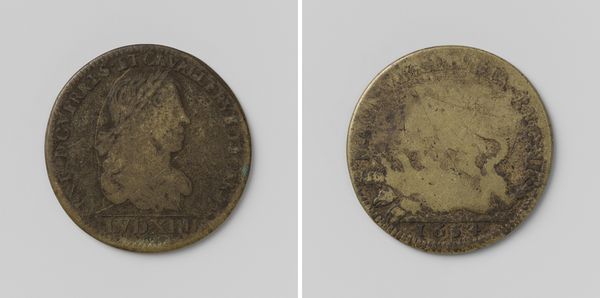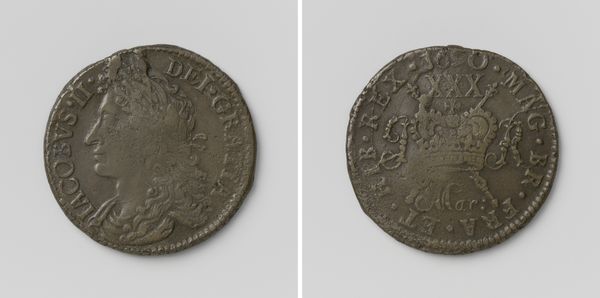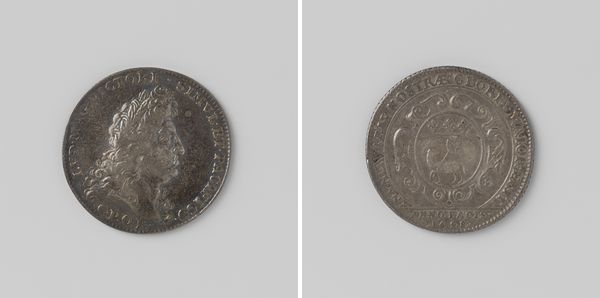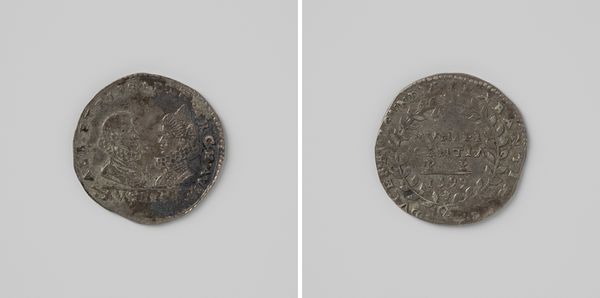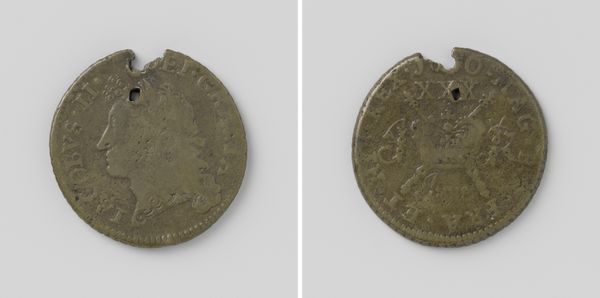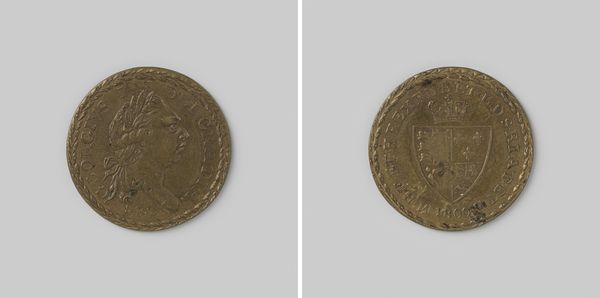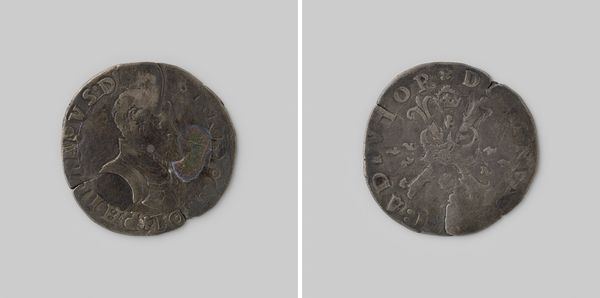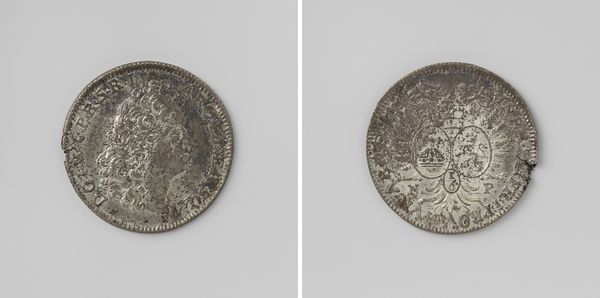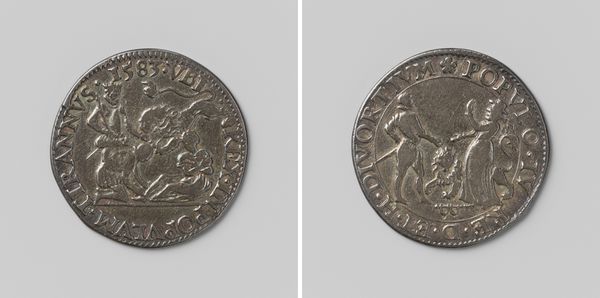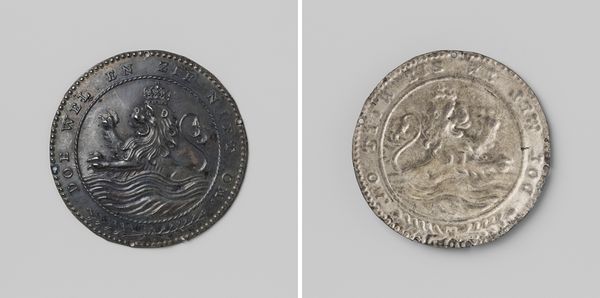
Halve crown, noodmunt van Jacobus II, koning van Engeland, uit november 1689 1689
0:00
0:00
metal, sculpture, engraving
#
baroque
#
metal
#
sculpture
#
history-painting
#
engraving
Dimensions: diameter 3.2 cm, weight 13.28 gr
Copyright: Rijks Museum: Open Domain
This is a small, anonymous half-crown coin, a ‘noodmunt’, made in November 1689 for Jacobus II, King of England. Its imagery speaks to a specific political moment. Jacobus II was deposed in 1688 during the Glorious Revolution. This coin, produced a year later, served as emergency currency during his attempt to regain the throne in Ireland. The portrait of Jacobus II is a clear assertion of royal authority, while the coin’s material and design reflect the instability of his reign. Coins are not just currency; they are potent symbols of power and legitimacy. This object offers insight into the economic and political turmoil of late 17th-century England and Ireland. By studying such objects alongside historical documents, political pamphlets, and other period sources, we can better understand the complex social and institutional forces that shaped this era.
Comments
No comments
Be the first to comment and join the conversation on the ultimate creative platform.

